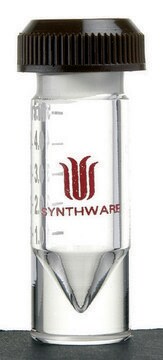03353575910
Roche
DIG Oligonucleotide 3′-End Labeling Kit, 2nd generation
sufficient for 25 labeling reactions (100 pmol of oligonucleotides per assay; 1 ug of a 30-mer oligonucleotide), storage condition avoid repeated freeze/thaw cycles
About This Item
Polecane produkty
zastosowanie
sufficient for 25 labeling reactions (100 pmol of oligonucleotides per assay; 1 ug of a 30-mer oligonucleotide)
Poziom jakości
producent / nazwa handlowa
Roche
charakterystyka ekologicznej alternatywy
Designing Safer Chemicals
Learn more about the Principles of Green Chemistry.
sustainability
Greener Alternative Product
kategoria ekologicznej alternatywy
, Aligned
Warunki transportu
dry ice
Powiązane kategorie
Opis ogólny
Zastosowanie
DIG-labeled oligonucleotides has been used in a variety of hybridization techniques:
- dot/slot blots
- colony/ plaque hybridizations
- Southern blots/ northern blots
- in situ hybridizations
Cechy i korzyści
- Fast hybridization kinetics, due to the small size of oligonucleotides
- Single-stranded probes, no renaturation during hybridization
- Sequence can be designed according to the experiment
- Specially suited for in situ hybridization; due to their small size, the oligonucleotides readily diffuse into fixed tissues and cells
Opakowanie
Jakość
Zasada
Uwaga dotycząca przygotowania
Working concentration: Oligonucleotides: 100 pmol
Up to 100 pmol (1 μg of a 30-mer) oligonucleotide can be labeled in a single standard labeling reaction.
Sample Materials
Oligonucleotides of a length from 14 to 100 nucleotides, purified by HPLC or gel electrophoresis
Przechowywanie i stabilność
Inne uwagi
Tylko elementy zestawu
- Reaction Buffer 5x concentrated
- CoCl<sub>2</sub> Solution 25 mM
- DIG-ddUTP Solution 1 mM
- Recombinant Terminal Transferase 400 U/μl
- Control Oligonucleotide, unlabeled 20 pmol/μl
- Oligonucleotide, DIG-ddUTP labeled 2.5 pmol/μl
- Control DNA, 2.5 pmol/μl pUC 18 DNA, supercoiled
- Glycogen Solution 20 mg/ml
- DNA Dilution Buffer, 50 μg/ml fish sperm DNA
Hasło ostrzegawcze
Danger
Zwroty wskazujące rodzaj zagrożenia
Zwroty wskazujące środki ostrożności
Klasyfikacja zagrożeń
Acute Tox. 4 Inhalation - Acute Tox. 4 Oral - Aquatic Chronic 2 - Carc. 1B Inhalation - Repr. 1B
Kod klasy składowania
6.1D - Non-combustible, acute toxic Cat.3 / toxic hazardous materials or hazardous materials causing chronic effects
Klasa zagrożenia wodnego (WGK)
WGK 3
Temperatura zapłonu (°F)
does not flash
Temperatura zapłonu (°C)
does not flash
Certyfikaty analizy (CoA)
Poszukaj Certyfikaty analizy (CoA), wpisując numer partii/serii produktów. Numery serii i partii można znaleźć na etykiecie produktu po słowach „seria” lub „partia”.
Masz już ten produkt?
Dokumenty związane z niedawno zakupionymi produktami zostały zamieszczone w Bibliotece dokumentów.
Klienci oglądali również te produkty
Produkty
Digoxigenin (DIG) labeling methods and kits for DNA and RNA DIG probes, random primed DNA labeling, nick translation labeling, 5’ and 3’ oligonucleotide end-labeling.
Metody znakowania digoksygeniną (DIG) i zestawy do sond DNA i RNA DIG, znakowanie DNA z losowym primerem, znakowanie nickiem translacyjnym, znakowanie końcowe oligonukleotydów 5' i 3'.
Nasz zespół naukowców ma doświadczenie we wszystkich obszarach badań, w tym w naukach przyrodniczych, materiałoznawstwie, syntezie chemicznej, chromatografii, analityce i wielu innych dziedzinach.
Skontaktuj się z zespołem ds. pomocy technicznej















